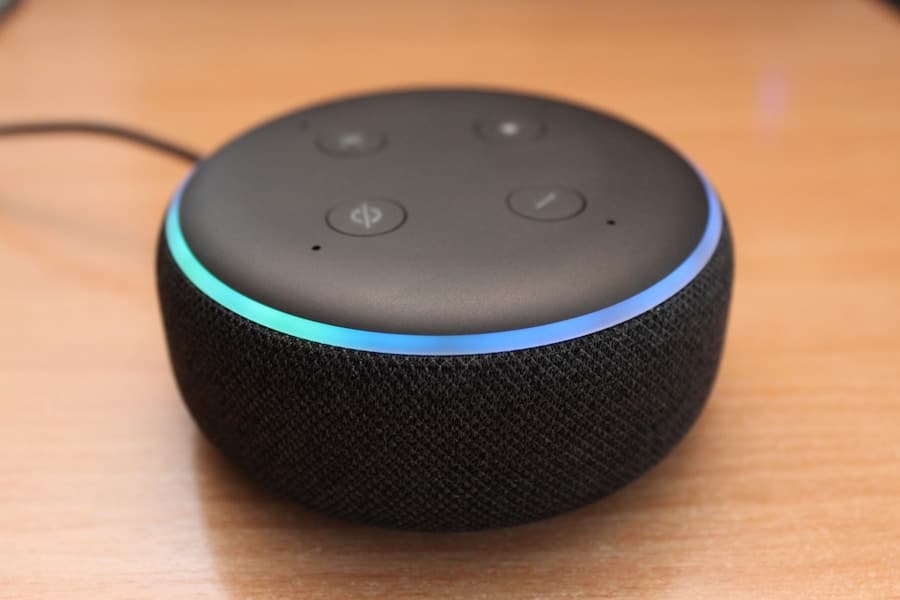Voice assistants have become an integral part of modern technology, revolutionizing the way users interact with devices and services. These AI-driven applications allow users to perform tasks, access information, and control smart devices through voice commands, making technology more accessible and user-friendly. The rise of voice assistants like Amazon’s Alexa, Apple’s Siri, and Google Assistant has demonstrated the potential of voice interaction in everyday life.
Open-source software presents a compelling alternative for those interested in developing their own voice assistants. By leveraging open-source frameworks, developers can access the underlying code, modify it to suit their needs, and contribute to a community-driven ecosystem.
This approach not only fosters innovation but also encourages collaboration among developers worldwide. Open-source voice assistant projects such as Mycroft, Jasper, and Rhasspy have gained traction, providing robust platforms for building personalized voice applications. These projects exemplify how open-source software can democratize technology, allowing anyone with the requisite skills to create unique voice-driven experiences.
Key Takeaways
- Voice assistants are becoming increasingly popular and open-source software can be used to develop them.
- Choosing the right open-source software is crucial for the success of your voice assistant project.
- Setting up a development environment is the first step in creating a voice assistant using open-source software.
- Designing a user-friendly interface and user experience is essential for the success of your voice assistant.
- Implementing voice recognition and natural language processing are key components of a successful voice assistant.
Choosing the Right Open-Source Software for Your Voice Assistant
Selecting the appropriate open-source software for your voice assistant is a critical step that can significantly influence the development process and the final product’s capabilities. Various factors should be considered when making this choice, including the software’s community support, documentation quality, extensibility, and compatibility with hardware. For instance, Mycroft is known for its strong community and extensive documentation, making it an excellent choice for beginners and experienced developers alike.
Its modular architecture allows for easy integration of new skills and functionalities, which can be particularly beneficial for those looking to customize their voice assistant. Another noteworthy option is Rhasspy, which focuses on offline voice recognition and natural language processing. This feature is particularly appealing for users concerned about privacy or those who want to operate their voice assistant without relying on cloud services.
Rhasspy’s ability to run on low-power devices like Raspberry Pi makes it an attractive choice for DIY enthusiasts. Additionally, Jasper offers a lightweight solution that is easy to set up and use, making it suitable for simple applications. By evaluating these options based on your specific requirements—such as desired features, hardware compatibility, and community engagement—you can make an informed decision that aligns with your vision for your voice assistant.
Setting Up Your Development Environment

Once you have chosen the right open-source software for your voice assistant, the next step is to establish a suitable development environment. This process typically involves installing necessary software tools, configuring your hardware, and ensuring that you have access to relevant libraries and dependencies. Depending on the chosen platform, you may need to install programming languages such as Python or Node.js, as well as package managers like pip or npm to manage libraries efficiently.
For instance, if you opt for Mycroft, you will need to set up a Linux-based environment since it primarily runs on Ubuntu. This setup may involve creating a virtual machine or using a dedicated Raspberry Pi device. After installing the operating system, you can clone the Mycroft repository from GitHub and follow the installation instructions provided in the documentation.
Ensuring that your development environment mirrors your intended deployment environment is crucial; this practice minimizes compatibility issues later in the development process. Additionally, consider using version control systems like Git to track changes in your codebase and collaborate with others effectively.
Designing the User Interface and User Experience
The design of the user interface (UI) and user experience (UX) is paramount in creating an effective voice assistant. While voice interaction may seem inherently different from traditional graphical interfaces, thoughtful design principles still apply.
Start by defining the primary use cases for your voice assistant; understanding what tasks users will perform will guide your design decisions. For example, if your voice assistant is intended for home automation, consider how users will issue commands to control various devices. The language used in prompts should be natural and conversational, allowing users to feel comfortable interacting with the assistant.
Additionally, providing visual feedback through a companion app or display can enhance the experience by confirming actions or displaying relevant information. Conducting user testing during the design phase can provide valuable insights into how real users interact with your assistant, allowing you to refine the UI/UX based on their feedback.
Implementing Voice Recognition and Natural Language Processing
At the heart of any voice assistant lies its ability to understand spoken language through voice recognition and natural language processing (NLP). Implementing these technologies requires a solid understanding of how they function and how they can be integrated into your open-source platform. Most open-source voice assistants come with built-in support for popular speech recognition engines like Google Speech-to-Text or Mozilla’s DeepSpeech.
These engines convert spoken words into text, which can then be processed by your application. NLP takes this a step further by interpreting the meaning behind the recognized text. Libraries such as spaCy or NLTK can be employed to analyze user input, extract intents, and identify entities within sentences.
For instance, if a user says, “Turn on the living room lights,” your NLP system should recognize “turn on” as an intent related to controlling devices and “living room lights” as an entity that specifies which device to control. By training your NLP model with diverse datasets that reflect real-world language use, you can improve its accuracy and responsiveness over time.
Integrating with Third-Party Services and APIs

Accessing External Data Sources
For instance, if you want to provide weather updates or news briefings, you can connect it to APIs from weather services or news aggregators.
Ensuring Secure Access
Many popular APIs offer straightforward documentation and SDKs that simplify integration processes. When integrating third-party services, consider authentication methods such as OAuth 2.0 to ensure secure access to user data.
Presenting User-Friendly Information
Handling API responses effectively is crucial; your assistant should be able to parse JSON data returned from APIs and present it in a user-friendly manner. For instance, if a user asks about the weather forecast, your assistant should not only retrieve data from a weather API but also format it into a coherent response that conveys relevant information clearly. This capability enhances user experience by providing timely and accurate information while maintaining conversational flow.
Testing and Debugging Your Voice Assistant
Testing and debugging are critical phases in the development of any software application, including voice assistants. Given the unique challenges posed by voice interaction—such as variations in speech patterns, accents, and background noise—thorough testing is essential to ensure reliability and accuracy. Start by creating a comprehensive test plan that outlines various scenarios users might encounter while interacting with your assistant.
Automated testing tools can be beneficial in this context; they allow you to simulate user interactions and verify that your assistant responds correctly under different conditions. Additionally, manual testing should involve real users who can provide feedback on usability and performance. Pay attention to edge cases where users might phrase commands unexpectedly or use slang; these scenarios can reveal weaknesses in your NLP model or recognition engine that need addressing.
Debugging tools integrated into your development environment can help identify issues in real-time, allowing you to make necessary adjustments quickly.
Deploying Your Voice Assistant and Continuous Improvement
After rigorous testing and debugging, it’s time to deploy your voice assistant into a production environment. Depending on your target audience—whether it’s personal use or a broader market—you may choose different deployment strategies. For personal projects, deploying on a local server or a Raspberry Pi may suffice; however, if you’re aiming for wider distribution, consider cloud hosting solutions that offer scalability and reliability.
Once deployed, continuous improvement should be a priority. Collecting user feedback is invaluable; it provides insights into how well your assistant meets user needs and highlights areas for enhancement. Implementing analytics tools can help track usage patterns and identify common commands or issues users encounter.
Regular updates based on this feedback will not only improve functionality but also keep users engaged with new features or capabilities over time. In conclusion, developing a voice assistant using open-source software involves multiple stages—from selecting the right platform to continuous improvement post-deployment. Each phase presents unique challenges but also opportunities for creativity and innovation in building personalized voice-driven experiences that cater to diverse user needs.
If you’re interested in exploring the latest advancements in technology, you may want to check out this article on unlocking a new world of possibilities with the Samsung Galaxy Z Fold4. This innovative device is pushing the boundaries of what’s possible with mobile technology, offering users a unique and immersive experience. Whether you’re a tech enthusiast or just curious about the latest gadgets, this article is sure to pique your interest.
FAQs
What is open-source software?
Open-source software is a type of computer software in which the source code is released under a license in which the copyright holder grants users the rights to study, change, and distribute the software to anyone and for any purpose.
What is a voice assistant?
A voice assistant is a digital assistant that uses voice recognition, natural language processing, and speech synthesis to provide a service through a particular application.
What are some examples of open-source software for creating voice assistants?
Some examples of open-source software for creating voice assistants include Mozilla DeepSpeech, Kaldi, and Jasper.
What are the benefits of using open-source software to create a voice assistant?
Using open-source software to create a voice assistant provides benefits such as cost-effectiveness, flexibility, and the ability to customize and modify the software to suit specific needs.
What are the steps to make your own voice assistant using open-source software?
The steps to make your own voice assistant using open-source software typically involve selecting the appropriate open-source software, setting up the necessary hardware and software components, training the voice recognition model, and integrating the voice assistant with other applications or devices.
What are some challenges of creating a voice assistant using open-source software?
Some challenges of creating a voice assistant using open-source software include the need for technical expertise, the time and resources required for training the voice recognition model, and the potential limitations of the open-source software in terms of features and capabilities.

